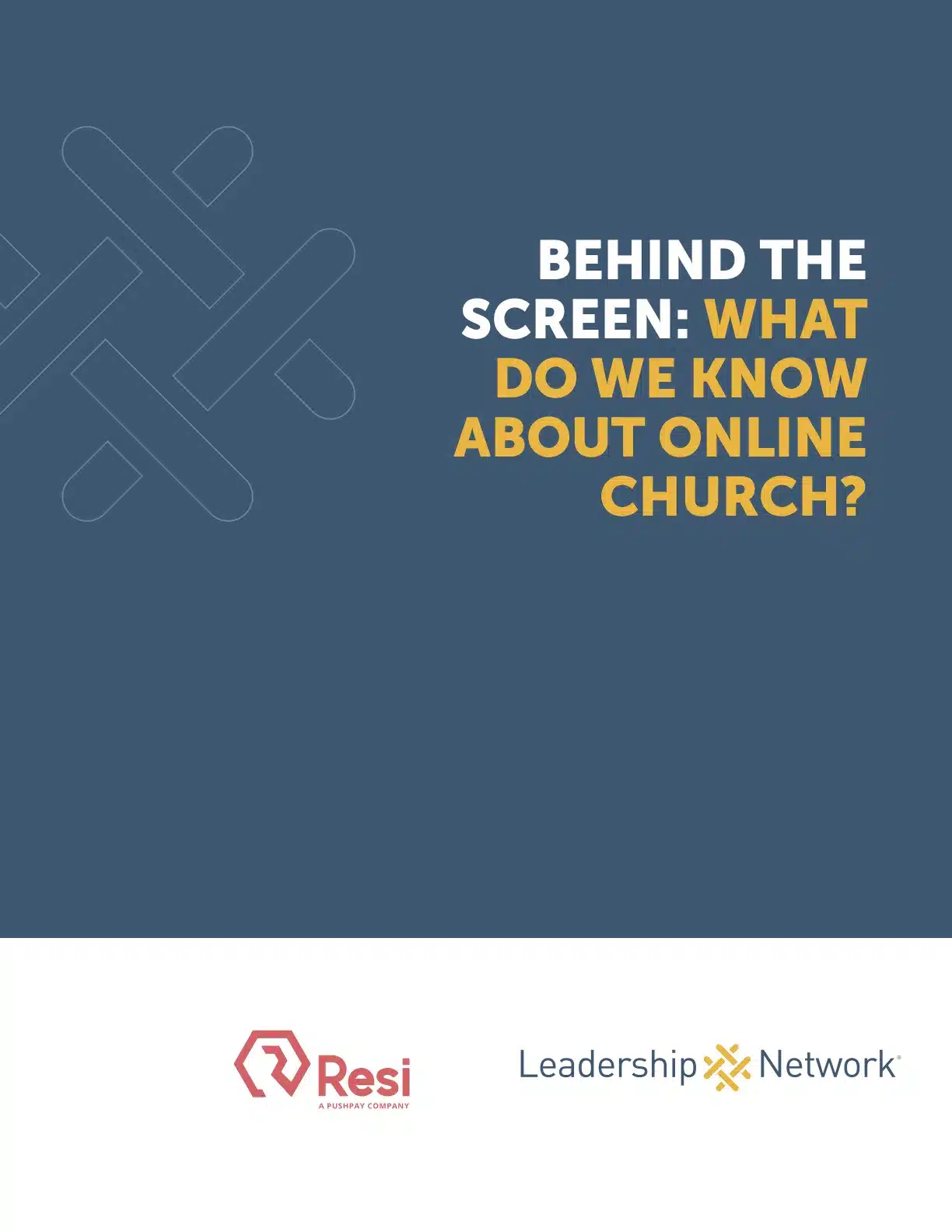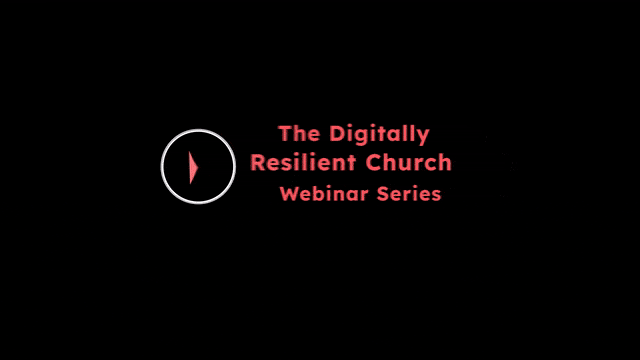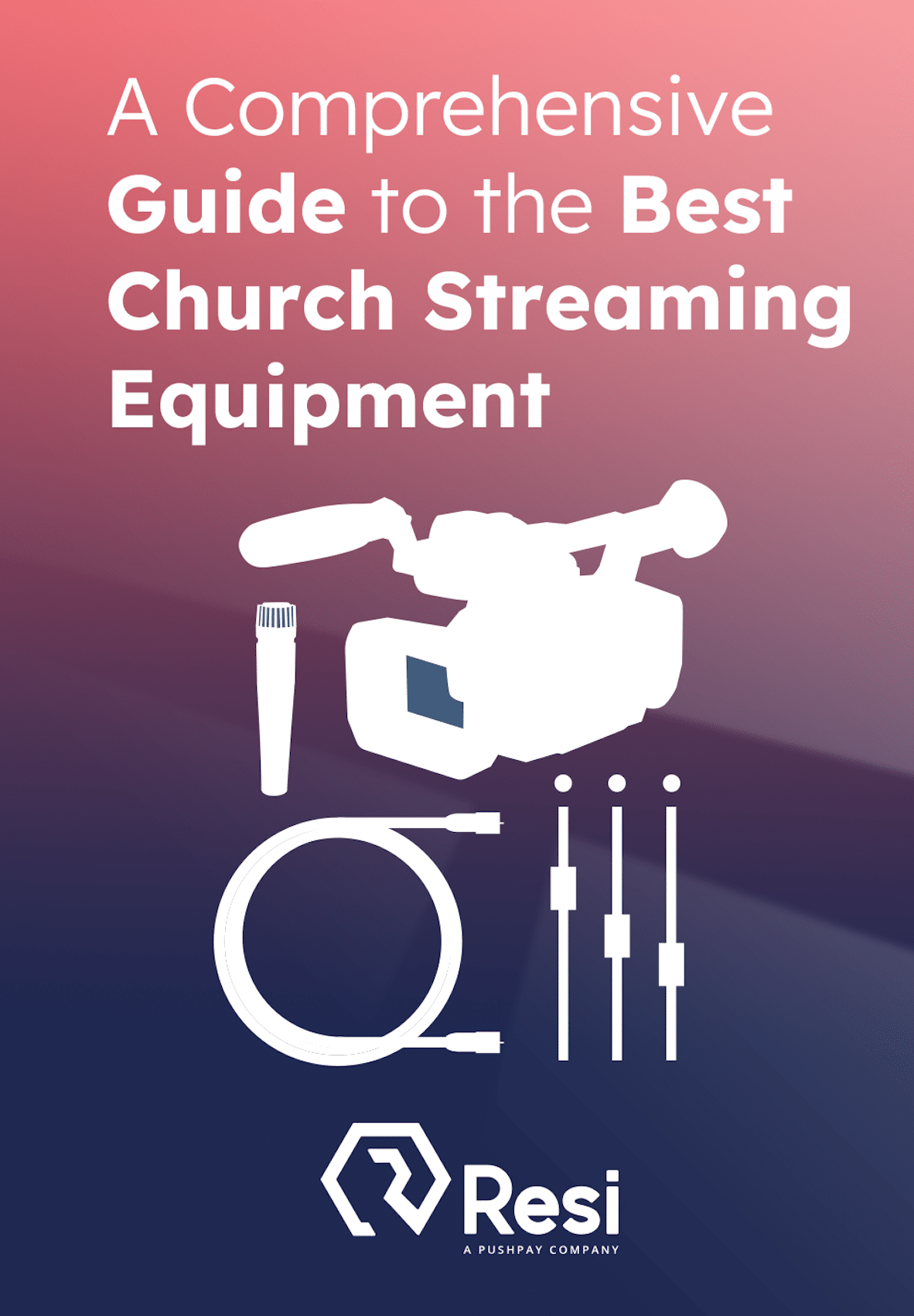
In the wake of the COVID-19 pandemic, a mass adoption of livestreaming of church services followed. There’s a challenge, though, in doing both physical and streaming services well—and simultaneously. We will review some of the tips and tricks churches utilize to effectively livestream physical worship.
Who knew streaming church services could be so controversial?
In December 2019, I met with a pastor in Miami. Their church was interested in streaming church services, and one of my friends on staff connected the pastor and me together so I could address some of the pastor’s concerns. Let’s just say the conversation didn’t go that well.
Within 30 minutes, the pastor chided me that I should confess my sins before God for taking people out of the Bride of Christ, the physical church building. The pastor then angrily stated that his church would never stream a church service online.
You probably know where this is going. I got a call from my friend somewhere around mid-March 2020. The country was in lockdown, and their church was desperate to stream. Jokingly, I asked if hell had frozen over. Evidently, the pastor asked for me by name, and we had them streaming via Resi in time for the following Sunday service.
Technology and the Church
Technological advances, historically, are viewed skeptically within the Church. Johannes Guttenburg was publicly vilified by some in the church for inventing the printing press, even though it meant Bibles were now in the hands of the people. Why was he criticized? Well, partly because many scribes, the people who hand-wrote the Bible, basically lost their jobs.
And if you were a Christian in the 1980s and 1990s, you probably remember the worship wars as churches started bringing in drums and electric guitars, but did you know as late as the 1800s, there was still controversy (in Europe) surrounding churches that wanted to utilize pipe organs to create musical worship. Back then, churches viewed organists as heretics!
In many ways, the Church is very reactive when forming its ideology. The printing press or pipe organs aren’t Biblical. But, as the Church, should we be okay with these things?
Behind the Screen: What Do We Know About Online Church?
See our findings about online church and gain important insight into your online audience.
Download for free!
This is today’s question: As we livestream our church services, is it helping us achieve our mission, or is it the equivalent of a digital distraction?
The Three Stages of Church Culture Adoption
In 2024, there are plenty of people who are antagonistic towards livestreaming and other aspects of digital ministry.
Jim Tomberlin is considered by many to be one of the early leaders of the Evangelical Multisite Movement. Jim adapted Willow Creek to the multi-site model in the 1990s and has helped countless other churches go multisite through his company, Multisite Solutions. Jim often talks about how even the multisite church was looked down upon in the early days.
Jim describes the “big C” Church culture as adopting any new idea as cutting edge, cool, and commonplace.
- Cutting Edge: With any viable idea, the pioneers often set out to prove an idea is possible. This is described as the “cutting edge.” Pioneers are often vilified in the Church when “tradition” and “opinion” are confused with “ecclesiology” and “Biblical mandate.”
- Cool: Especially in modern church culture, the next adoption phase is the “cool” churches. These are the churches you’ve heard of, with well-known leadership and budgets to match. Larger churches—a.k.a cooler churches—often have budgets to experiment with.
- Commonplace: What happens once the cool churches succeed with the technology/strategy? It’s adopted at a much larger scale. The idea reaches the tipping point and becomes commonplace.
Historically, the idea of livestreaming has followed this same path within church culture. In 2006, livestreaming was a cutting-edge concept when Life.Church began using the technology to plant churches. Interestingly, they called it the “Internet Campus.” Some may even remember their Second Life campus, which launched on Easter 2007.
The success of the pioneering Life.Church, with this cutting edge technology, encouraged other brave churches to experiment until the cutting-edge concept solidified into a “cool” concept. Today, according to Pushpay’s State of Church Tech Report, 91% of churches livestream their physical church service. Streaming has indeed become commonplace.
Challenges of Integrating Livestreaming with Traditional Worship
That being said, Life.Church and those other “cool” churches make this look easy, don’t they? It’s not. Let’s detail some of the challenges:
- Church in Isolation – What church didn’t feel this pain point during COVID? All these attendees watched their devices Sunday morning, but very few were engaging online.
- Perceived Lack of Community – “If only there were a church lobby!” I had a lead pastor tell me that once. The lobby, for this particular church, is where “community” happened. It’s where everyone hugged, prayed, cried, and laughed together. It indeed was an incredible experience to see. But how do you capture this level of true community digitally?
- “Do People Wearing Pajamas Count?” – I had a pastor ask me that question once. (The answer is “Yes!” if you’re curious.) The lack of analytics surrounding livestreaming indicates how drastic a strategy shift digital church will become.
- ”We can’t do physical and digital well at the same time.” – This was common during the pandemic. Sure, most churches struggled at the beginning going digital, but digital was the only focus. Once doors open, do they have to think digitally and physically simultaneously? Well, that’s like the first year of a multisite church. They have to prioritize two campuses equally..
Strategies for Balancing In-Person and Online Worship
Thinking Digital First, Physical Priority?
This will seem counterintuitive, but when planning your hybrid worship services, I encourage you to think about digital first.
Today, so many people on your staff and volunteer teams will prioritize the physical environment. It’s been my experience that if digital isn’t the focus at the start, it’s often overlooked or overpowered by the physical mindset.
Historically, I’d go as far as to empower individuals to think “digital first,” and challenge them to ask the questions necessary to get the other staff to learn to prioritize digital. I’ve often used a short-term solution to create an authentic hybrid culture among worship, production, creative, and preaching/teaching teams.
To create a hybrid culture to explore the depths of digital worship, teams—more than individuals—need to think digitally and physically. The physical-first mentality will limit the growth and development of digital.
There’ll be tension around whether to prioritize digital or physical. Each church will need to wrestle with this individually. The more your church depends on online services to accomplish its mission and vision, the more it will need to prioritize digital over physical.
Qualitative Stats over Quantitative Stories
It’s easy to be caught up in digital numbers. Metrics and multipliers may be necessary to equate physical and digital attendees, but stories are far more effective than numbers in creating digital awareness.
Digital attendees have names, faces, and stories. They have spiritual needs. This is what your church staff and your physical church need to see. There is little to no difference between the physical, digital, and side-door attendees.
To Simplify Communication, Digitize Your Discipleship Process
Connecting with digital people and developing relationships is necessary to disciple them in the digital space.
In physical church services, a lot of time is dedicated to communicating announcements, and even the church lobby is used to connect people to serving opportunities or small groups.
Unfortunately, most online services broadcast the announcements from the broadcast campus, which are probably irrelevant to the viewers online. Stopping by a booth in the lobby to get a first-time guest gift or sign up to serve in the nursery doesn’t mean something to an online attendee.
Many churches have digitized the discipleship process. Sign up for a small group, whether in the physical building or online, you’re taking out your phone and scanning that QR Code. Giving? First-time guest? Prayer requests? Digital and physical attendees are reaching for their mobile phones to interact.
Resi’s Call To Action feature makes this easy for the online audience, with a clickable icon you can place on the Resi player with customizable text and URLs.
The Future of Worship: Trends and Predictions
With 91% of churches streaming online today, it’s safe to say the online worship experience isn’t going anywhere. Hybrid is very much the future.
In recent months, I’ve seen technology that will allow us to create augmented reality elements on stage during worship and teaching. They’re working on technology where online attendees can be projected as holograms sitting in physical church pews. Some churches use hologram projects for the lead communicator to preach his sermon to multisite locations. And we haven’t even discussed the AI revolution yet.
As Sunday morning is becoming increasingly accepted as a hybrid experience, the next natural step will be for the church to lean into digital discipleship.
You’ll see more churches utilize digital communities within their discipleship process. While digital worship services are commonplace, digital discipleship is probably at the cutting edge. Time will tell how that develops.
Best Livestreaming Equipment
Discover what top-rated equipment we recommend adding to your church streaming toolkit.
Download for free!








